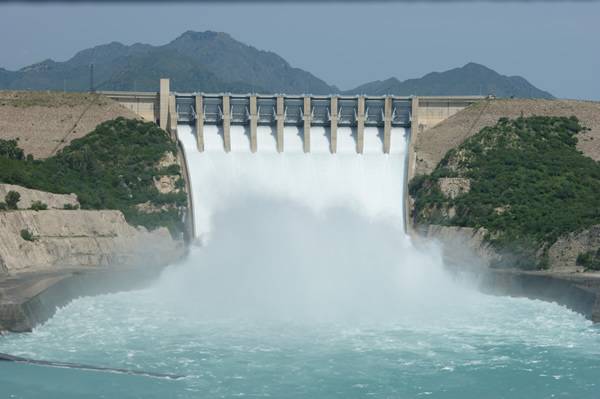It is our national responsibility to let people know about the truth and positive intent of the China-Pakistan Economic Corridor (CPEC). Pakistan is the one of the least developed countries of Asia. Its natural resources were not properly utilized and neither was its human capital. Development cannot match with the ever-increasing population expansion, reaching 180 million, the six highest in the world. The country could only launch mega projects like the Tarbela and Mangla Dams in the 1960s and Motorway in the late 1990s. It has been unable to launch another, it needs one now.
Pakistan lacks in basic physical infrastructure, whereas China offers huge physical infrastructure development to meet the basic demand of industrially growing Pakistan. Completion of which would spurs development across Pakistan and would give a quantum jump to its GDP.
China has been a most reliable partner of Pakistan. The size of the present-day Chinese economy (US$ 16.7 trillion) makes it the largest in the world. Yet it is still in a developing stage unlike the American and Japanese economies. Pakistan, despite having good relations with America and Japan in the past, has been unable to launch any mega development project. Their preferences were based upon political grounds. On the contrary, China launched the Taxila Heavy Mechanical Complex in 1971 and even Russia funded a large steel mill in Karachi in 1969.
Now China plans to build around 3000 km long economic corridor linking Gwader to Kashgar in western China; reviving a historical tradition The ancient one was known as the Grand Silk Road, connecting China (and also Japan and Korea) to Central Asia onward to the Middle East and Europe and Africa. Trade thoroughfares are a modern necessity; present all over the world.Euro-corridors, MERCUSOR, Continental-1 Corridor between Toronto-Miami (1,500 km), Northern Corridor Economic Zone, Trans-Kalahari Corridor in Africa, and the Greater Mekong Sub-region in South East Asia are some of the notable examples.
In Europe, discussion on the concept of a trade corridor gained strength in the 1960s. European geographers and architects drew attention to the concept of corridors as useful mechanism to promote rapid development across regions, and as a result several European countries launched infrastructural economic corridors for speedy development and for the promotion of inter-State connectivity in the 1960s.
China itself is a vast country. There are around nine important corridors in China. The country has been heavily focused on its neighborhood, employing a policy non-interventionist and instead offering a huge room for cooperation in mutually beneficial development.
Notwithstanding the geographical significance of Pakistan as a meeting point between South and West Asia and providing maritime access to China and Central Asia, the idea of launching an economic corridor was ignored in Pakistan for long. The building of the CPEC was unveiled by Chinese Premier Li Keqiang during his visit to Pakistan in May 2013. While speaking to the Senate of Pakistan, he declared that ‘the development of China cannot be separated from the friendship with Pakistan’.
Additionally, as trade strengthened between Pakistan and China, at US$ 15 billion, China showed an interest in investing a large sum of capital, and assisting with the chronic electricity shortage in Pakistan. Now, it has announced the CPEC. In return, this project would diversify Chinese routes energy import from the Gulf, all of which is presently going through the Indian Ocean to South China Sea. After China constructed the Gwader Deep Sea Port, it was handed over to China Overseas Port Holding Company Ltd (COPHC) in February 2013. Earlier, the Port of Singapore Authority (PSA) could not handle the management of Gwader Port under the lease agreement.
Unlike PSA, COPHC has been initiating numerous mega projects in consultation with both the governments of Pakistan and China. Many developments have been coming up to promote physical infrastructure.
Over thirty projects have been identified so far under the CPEC. At Gwader alone, CPHC will build the following projects: Gwader Duty-Free Port, Gwader International Airport, up-gradation of Hospital at Gwader, the Pak-China Technical & Vocational Institute at Gawader, and the Gwader 300 MW Coal Fire project. Over 1400 km road infrastructure will be built in Balochistan.
Therefore, in view of the importance of trade corridors developed in China, Europe, Americas, Africa, and South East Asia, the CPEC would be a grand breakthrough in world’s history of trade corridors. The CPEC would be a strategic leap forward, offered by China to modernize Pakistan’s economy.
Saturday, April 20, 2024
The CPEC: A leap forward

Freedom Flotilla prepares for humanitarian aid delivery to Gaza
9:14 AM | April 20, 2024
22 suspects arrested
April 20, 2024
Policitising Tragedy
April 20, 2024
Tehran to Rafah
April 20, 2024
A New Leaf
April 20, 2024
A Tense Neighbourhood
April 19, 2024
Dubai Underwater
April 19, 2024
Dangers of Deepfakes
April 20, 2024
Feudalism
April 20, 2024
Kite tragedy
April 19, 2024
Discipline dilemma
April 19, 2024
Urgent plea
April 19, 2024
ePaper - Nawaiwaqt
Advertisement
Nawaiwaqt Group | Copyright © 2024





